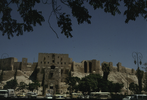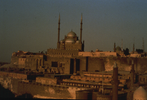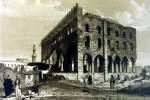Previous Lecture | Next Lecture
Concepts
The Sunni Revival: A term used to designate the movement initiated by the Ghaznavids of Afghanistan (977-1186) which culminated with the Seljuqs who actively sought the elimination of Shi`ite principalities in the Islamic world and the Shi`ite grip on the Abbasid Caliphate in Baghdad and who sponsored and fostered the renaissance in Sunni theology and jurisprudence.
The Crusades: A series of campaigns launched by Christian Europe against the Islamic east, ostensibly to liberate the Holy Land. After the conquest of Jerusalem in 1099, four Latin principalities were founded in the area, the last of which was eliminated in 1293 by the Mamluks.
Salah al-Din (Saladin): A general in the Zangid army sent to Egypt, he managed to abolish the Fatimid caliphate in 1176 and to restore Sunnism to the country. He later established a new dynasty, engaged in a war of attrition against the Crusaders, and encircled the two cities of Fustat and al-Qahira in one wall and built the Citadel of Cairo.
Krak des Chevaliers: The most important Crusaders' castles in Syria (12-13th c.). Its last phase of building during the 13th century illustrates the incorporation of new fortification techniques in response to technical advances in siege machines.
The Citadel of Aleppo: An early Islamic citadel that might have influenced the choice of location and forms of the Citadel of Cairo and the types of palaces and audience halls to be built in it.
The Citadel of Cairo: Built by Salah al-Din's lieutenant Qaraqush between 1176-1183 as a royal residence and barracks for the troops and reorganized and enlarged several times in the 13th-14th century. It became the seat of the sultanate and remained the center of government well into the 19th century. To this day, it still dominates the Cairo skyline.
Iwan: Usually a vaulted hall, open at one end. By the twelfth century, iwans became important organizational elements in plans of residences and religious structures alike to the point that the word acquired a new meaning as the name of an entire structure, usually a royal one.
Dar al-`Adl: The palace of justice, an institutional building that appeared under the Ayyubids and was used by the sultans and their deputies to publicly judge petitions submitted by subjects. The Cairo Citadel had a Dar al-`Adl that was rebuilt at least four times and was called The Great Iwan.
Monuments




